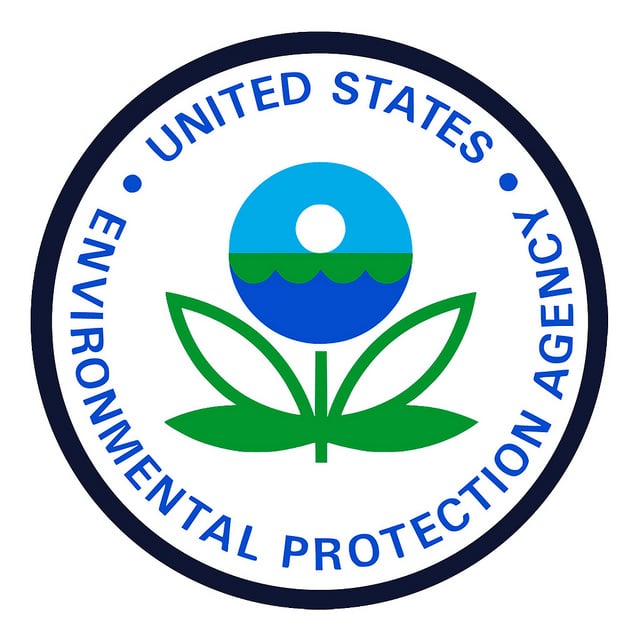On September 16, 2025, the US Environmental Protection Agency (EPA) published a proposal to eliminate the vast majority of its longstanding Greenhouse Gas Reporting Program (GHGRP), which requires thousands of facilities and organizations to report annual emissions of greenhouse gases (GHGs) (40 CFR part 98). (I’ve written about this program over the years, most recently when EPA issued massive revisions in April 2024 (see HERE). The remainder of this note briefly summarizes EPA’s latest interpretation and identifies the small portion EPA proposes to retain, and the existing GHGRP.
Audit, Compliance and Risk Blog
EPA proposes to eliminate most mandatory greenhouse gas emission reporting requirements
Posted by Jon Elliott on Fri, Oct 03, 2025
Tags: EPA, Greenhouse Gas, Clean Air Act, Climate, Environmental Compliance, EPA Regulations, EPA Standards, GHG Reporting, EPA enforcement, Climate Disclosure, Climate Risk, Air Quality
EPA provides battery energy storage system safety and response guidance
Posted by Jon Elliott on Fri, Sep 26, 2025
On August 21, the US Environmental Protection Agency (EPA) posted updated guidance for battery energy storage system (BESS) installation and incident response. EPA has added a 3-page Fact Sheet, “Battery Energy Storage Systems: Main Considerations for Safe Installation and Incident Response” to its online compilation of information for “Sustainable Management of Electronics and Batteries.” EPA notes that BESS operations help stabilize electrical grids by providing steady power flow, particularly where there may be interruptions in grid power or fluctuations in production from renewable energy sources. However, EPA also notes that lithium battery fires at some installations (notably at commercial facilities in San Diego and Moss Landing, California) have raised safety concerns in many communities. EPA intends its new guidance to help address these concerns; the remainder of this note summarizes EPA’s new guidance.
Read MoreTags: EHS, EPA, sustainability, Clean Energy, Fire Safety, Environmental Health and Safety, Fire Risk Management, Risk Management, Battery Energy Storage
EPA narrows criminal enforcement to follow administration priorities
Posted by Jon Elliott on Fri, Sep 05, 2025
The US environmental Protection Agency (EPA) continues to narrow its enforcement focus in order to follow Trump administration priorities. I recently wrote about EPA’s May 2025 statement of new enforcement policies (I wrote about that memo HERE). Now, EPA has announced further changes, to align its activities with the President’s Executive Order “Fighting Overcriminalization in Federal Regulations” (EO 14294). The remainder of this note summarizes these changes.
Read More
Tags: EPA, Environmental Policy, Environmental Compliance, EPA Regulations, EPA Standards, Trump Administration, Environmental Health and Safety, Environmental Protection Agency, EPA enforcement
Administration proposes zero budget for Chemical Safety Board
Posted by Jon Elliott on Fri, Aug 08, 2025
Many of the Trump administration’s recent budget requests have proposed reduction in funding for environmental, health and safety (EH&S) agencies (For example I wrote about the environmental Protection Agency (HERE and Occupational Safety and Health Administration HERE ). Most drastically, the administration has proposed ZERO funding for the federal Chemical Safety and Hazard Investigation Board – which usually refers to itself as the Chemical Safety Board or CSB. CSB conducts independent investigations of major chemical accidents, issues accident-specific findings, offers specific or general recommendations for improved chemical handling and regulation, and has enacted a “Chemical Incident Reporting Rule.” (I wrote about the Rule HERE, and compliance guidance HERE). The remainder of this note summarizes CSB’s latest guidance.
Read More
Tags: OSHA, Environmental, EHS, EPA, CSB, Chemical Safety Board, Trump Administration, EHS Compliance, Incident Reporting, Accidental Release Prevention, Process Safety Management, chemical incident investigations
The Trump Administration has issued its budget proposal for federal Fiscal Year (FY) 2026 (October 1, 2025 through September 30, 2026), including a 54% cut in the Environmental Protection Agency (EPA) budget, from $9.1 billion in FY 2025, to $4.16 billion for FY 2026. Many of the cuts apply to grant programs, and the proposal would cut staffing by 9%, from 14,130 full-time-equivalent employees (FTE) to 12,856. Readers should note that these cuts are comparable to those proposed by President Trump during his first term; EPA’s actual annual budget depends on that adopted by Congress (or a continuing resolution in lieu of an adopted budget). The remainder of this note summarizes EPA’s proposed FY2026 budget, including proposed reductions, drawn from EPA’s “Budget in Brief” (68 pages) and “Justification of Appropriation Estimates” (736 pages).
Read More
Tags: EPA, RCRA, tsca, Clean Air Act, Environmental Policy, Climate, EPA Regulations, EPA Standards, Trump, Trump Administration, Climate Reporting
EPA realigns enforcement policies to match new administration
Posted by Jon Elliott on Fri, May 09, 2025
On March 12, the US Environmental Protection Agency (EPA) issued a memorandum announcing significant revisions to the agency’s enforcement policies, entitled “Implementing National Enforcement and Compliance Initiatives Consistently with Executive Orders and Agency Priorities.” The memo directs EPA’s civil and criminal enforcement staffs, revising existing Biden-era policies (which I last wrote about HERE) to conform with President Trump’s executive orders (EOs) and policy statements by new EPA administrator Zeldin. The remainder of this note summarizes this new direction.
Read MoreTags: EHS, EPA, NECI, Trump Administration, Environmental Justice rollback, Air toxics enforcement, EPA enforcement, NECI policy changes, Trump Executive Orders
EPA delays deadline to report 2024 greenhouse gas emissions
Posted by Jon Elliott on Mon, Apr 28, 2025
Since 2011, the US Environmental Protection Agency (EPA) has administered an extensive Greenhouse Gas Reporting Program (GHGRP), which requires thousands of facilities and organizations to report annual emissions of greenhouse gases (GHGs) (40 CFR part 98). Although reports are usually due by March 31 of the following year, EPA has delayed the deadline for reporting year (RY) 2024 until May 30, 2025. EPA cites delays in making the new version of its Electronic Greenhouse Gas Reporting tool (e-GGRT) available.
Read More
Tags: EPA, Greenhouse Gas, sustainability, GHGRP, Environmental Compliance, Environmental Regulations, Carbon Reporting, GHG Reporting, Climate Reporting, Compliance Update, Emission Reporting, eGGRT
EPA announces 31 reconsiderations and revisions toward Trump administration priorities
Posted by Jon Elliott on Tue, Mar 18, 2025
On March 12, the US Environmental Protection Agency (EPA) announced “31 historic actions in the greatest and most consequential day of deregulation in U.S. history.” These actions move to reconsider, and likely reverse, actions from the Biden administration as well as earlier EPA actions dating back to at least 2009. These actions are summarized in a general press release, and accompanied by more than 20 additional releases announcing specific actions; most involve the Clean Air Act (CAA). EPA links these initiatives to President Trump’s latest executive orders (EOs) and policy initiatives (I wrote about the EOs HERE and HERE). In earlier notes I addressed many of the regulatory and policy actions that will now be reconsidered. )
Read MoreTags: Environmental, EPA, Clean Air Act, Clean Energy, Environmental Policy, CCA, Deregulation, Manufactoring
Trump administration reworking the Environmental Protection Agency
Posted by Jon Elliott on Tue, Mar 04, 2025
Since returning to office in January, President Trump and his administration have promulgated many actions to reduce and revamp the US federal government, and additional actions focused on specific agencies. I wrote about general approaches to environmental regulation HERE. In addition, The Environmental Protection Agency (EPA) has been a target of specific directives, and new EPA administrator Lee Zeldin has already announced important policy and procedural changes at his agency. The remainder of this note summarizes EPA-specific changes ordered and/or instituted as of the end of February 2025.
Read MoreTags: EPA, tsca, clean water, Executive Order, Clean Air Act, environmental protection, Environmental Compliance, Trump, Trump Administration, Environmental Protection Agency
Federal Agencies Adjust Civil Penalty Levels for Inflation
Posted by Jon Elliott on Wed, Feb 12, 2025
Many regulatory laws provide for civil – and sometimes even criminal – penalties for noncompliance. Statutes set penalty levels (“XXX dollars per day of violation” for example), at levels intended to provide meaningful deterrence and punishment for noncompliance. But over time, these penalties' stings decline with inflation. To counteract the possibility that less painful penalties reduce incentives for compliance, U.S. law directs most federal agencies to make annual “cost of living” adjustments to the maximum statutory civil penalty levels (there are no provisions for standing periodic adjustments to criminal penalties).
Read MoreTags: OSHA, EPA, regulatory registers, RegulatoryUpdates, EnviromentalCompliance, EHSCompliance







